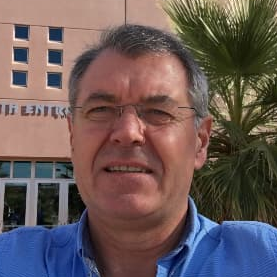Microstructure, Texture and Properties Control in Alloys
A special issue of Metals (ISSN 2075-4701).
Deadline for manuscript submissions: closed (20 October 2019) | Viewed by 28744
Special Issue Editors
Interests: thermal and thermo-mechanical processing of metallic materials; advanced high strength steels (AHSS); ultrafast heating, thermal cycling, microstructural characterization including texture -SEM, EBSD (TKD, TEM, XRD); processing-structure-property relationship in metallic materials; damage and fracture in AHSS, rails and bearings
Special Issues, Collections and Topics in MDPI journals
Interests: texture control in metal sheet production; crystallographic aspects of metal science; microstructure; scanning electron microscopy; EBSD; electrical steels; advanced high strength steels; aluminium sheet; recrystallization; plastic deformation; structure-properties relations
Special Issue Information
Dear Colleagues,
Optimization of the microstructure and texture in metals continues to be a significant challenge for industry and academia. This is even more important nowadays when social issues, such as global warming and metal scarcity, are key concerns of current far-reaching policy decisions. An effective way to address these issues is the development of advanced alloys with excellent combinations of properties—weight, strength and ductility. The main objective of this Special Issue of Metals is to facilitate more intense developments in this field of research, and to disseminate these recent developments to industry.
Among the main subjects of interest for this Special Issue are papers focused on: (i) methods for microstructure and texture control in advanced high strength steels, pipeline steels, aluminum, magnesium and titanium alloys, (ii) new (non-conventional) technological approaches for production of these alloys that will lead to improved mechanical, technological and functional properties, (iii) metal alloy research and developments that relate to texture and anisotropy after conventional and non- conventional treatments; and (iv) application of advanced characterization techniques for the characterization of damage and fracture.
We truly believe that this issue of Metals will, not only favor networking and international collaboration, but will also help the metals research community to formulate new challenging directions in this exciting field of science and technology.
Prof. Dr. Roumen H. Petrov
Prof. Dr. Leo A.I. Kestens
Guest Editors
Manuscript Submission Information
Manuscripts should be submitted online at www.mdpi.com by registering and logging in to this website. Once you are registered, click here to go to the submission form. Manuscripts can be submitted until the deadline. All submissions that pass pre-check are peer-reviewed. Accepted papers will be published continuously in the journal (as soon as accepted) and will be listed together on the special issue website. Research articles, review articles as well as short communications are invited. For planned papers, a title and short abstract (about 100 words) can be sent to the Editorial Office for announcement on this website.
Submitted manuscripts should not have been published previously, nor be under consideration for publication elsewhere (except conference proceedings papers). All manuscripts are thoroughly refereed through a single-blind peer-review process. A guide for authors and other relevant information for submission of manuscripts is available on the Instructions for Authors page. Metals is an international peer-reviewed open access monthly journal published by MDPI.
Please visit the Instructions for Authors page before submitting a manuscript. The Article Processing Charge (APC) for publication in this open access journal is 2600 CHF (Swiss Francs). Submitted papers should be well formatted and use good English. Authors may use MDPI's English editing service prior to publication or during author revisions.
Keywords
- Innovative technologies
- Sheet production
- Steels
- Al, Mg, Ti alloys
- Microstructure
- Texture
- Mechanical properties
- Anisotropy
- Microstructural aspects of damage and fracture
- SEM, EBSD, TKD, TEM






